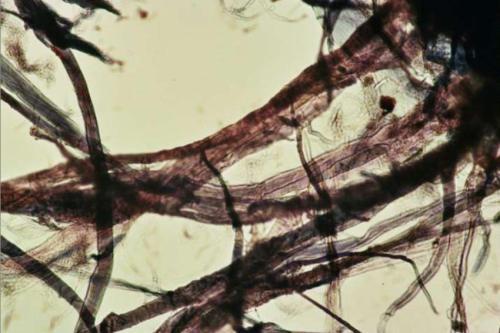Q: In my story, a police officer is on the scene where the body of a 3 year old child was found among the rocks and weeds of a dried up riverbed in Southern California. It is early summer. Can the CSI techs or the ME determine if the child died from being locked up in a heated car rather than from exposure to the elements where the body was found?
Jack Dietz, Production Coordinator, Las Vegas, NV
A: The simple answer is that this is not very likely however there might be a way. Much depends on the condition of the body. If it is severely decayed or has become skeletal, the ME would have little to work with and there would be no way to determine exactly where the death occurred. In either case the death would be from that catchall term “exposure.” What that means is that the victim died from lack of water or food, with water of course being the most important. Exposure deaths are almost always due to severe dehydration.
However, if the child is found within a day or two of death, the body would be more or less intact and the ME might be able to estimate where the death had occurred, given the two choices you outlined. One difference would be insect activity. If the child died in the trunk as opposed to being exposed outdoors there would be less insect activity for the amount of time since death than would be expected from an exposed corpse. If the ME determined that the child had been dead for 2 or 3 days yet there was essentially no insect activity, it would mean that she had been in a protected environment, such as an enclosed car or car trunk, for those 2 or 3 days and only exposed for maybe a few hours. On the other hand, if he found insect activity that matched his estimate of the time since death, this would favor her being in an exposed environment for those 2 to 3 days. It’s not that flies can’t get into car trunks, it’s just that most trunks are so well sealed, fly access would be very limited, if at all.
On a similar note, predatory animals would not be able to attack the body while it was in the car but if exposed predator feeding on an exposed body is fairly common. Coyotes are everywhere. Predator activity would suggest a longer period of environmental exposure.

One circumstance that might be interesting for you would be if the child died in either the trunk or on the floorboard of the car. As she died from hyperthermia and dehydration, she would increasingly gasp for breath toward the end of her life and could inhale carpet fibers from the trunk lining or floor carpets. This would not happen if death occurred while exposed outside. This would of course require that the body be in fairly good condition. I think as long as you have the body found within a few days, the decay process would not have progressed far enough for the lungs to be destroyed and the medical examiner might see these fibers during his microscopic examination of lung tissue. Once he found these fibers, he would know that the victim had inhaled them and therefore was alive while in the car. So finding the fibers would at least allow the medical examiner to guess that she had been in the car near or shortly before her death.

Another interesting thing about this scenario is that the ME could then analyze these fibers physically, optically, and chemically and determine the manufacturer of the carpet and this in turn could lead to the car manufacturer and even the make and model year–or at least a narrow range of years since car manufacturers change their products quite frequently. This would greatly help your police officer develop suspects.
